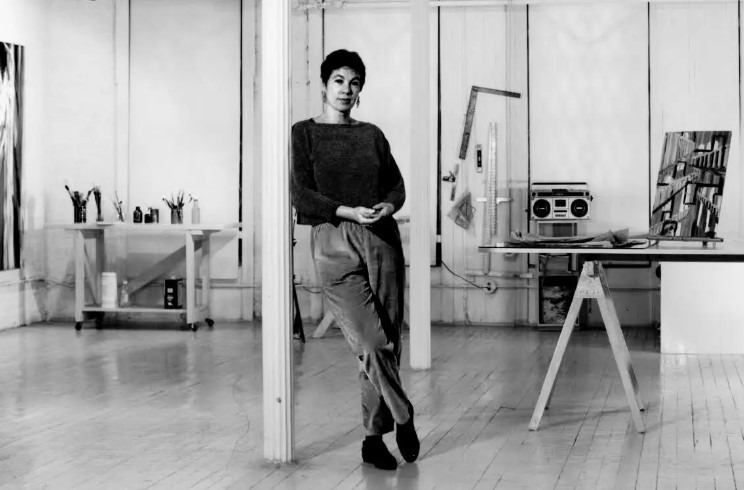Martha Diamond, a painter who gracefully pictured New York from all its many vantage points, died on Saturday at 79. A representative for David Kordansky, her gallery, said she died of a long illness.
Skyscrapers, scaffolding, reflections of tall buildings in glassy windows, and distinctive features of the Manhattan skyline were among the many subjects that Diamond regularly depicted. Rather than painting them naturalistically, however, she rendered them expressionistically, allowing their forms to smear and blur as she depicted the city through her lens.
“Diamond is a New York visionary,” wrote the poet Bill Berkson in a 1990 profile of her for Artforum. “Her pictorial embodiments of the stuns and implosions of urbanity are best understood in the company of those painters of Manhattan across whose surfaces the arguments between representation and abstract form are deflected by the urge to nail down the forces that contend at just about any intersection.”
Because her paintings’ subject matter was so straightforward, many critics noticed a tendency among viewers to disregard them as flat or easy to take in. That, of course, was hardly the case.
“Ms. Diamond’s whole approach to painting is deceptively simple, full of hidden skills and decisions that only gradually reveal themselves, along with a good deal of humour and very little pretension,” New York Times critic Roberta Smith wrote in a laudatory review of one of her shows.
Diamond died just months before a 60-work survey of her art was to open at the Colby Museum of Art in Waterville, Maine. Scheduled to begin in July, the exhibition is also being organized by the Aldrich Contemporary Art Museum in Ridgefield, Connecticut, where the show will travel after its run at the Colby Museum.
A painting of a yellow-toned building that appears to curve against a blue and green sky.
She had also just obtained representation this past September with David Kordansky, a heavyweight of the Los Angeles gallery scene who also operates a New York space. Her representation with that gallery came after New York spaces such as Magenta Plains and Galerie Eva Presenhuber helped raise her profile, with shows staged in recent years.
“Beyond the striking visual elements and her command of colour and texture, there is so much feeling emanating from the canvas,” dealer David Kordansky said. “These are the stories and legacies that I have the privilege and duty to share and honour. Martha will be deeply missed.”
Martha Diamond was born in 1944 in New York, the city in which she would remain based for almost all of her career. In a 2021 Artforum interview, she recalled travelling around the city with her father, a doctor, and taking in the sights. But she called her initial attempts to paint on the city street using tempera her “first art problem.”
“You know if you try painting without any preparations whatsoever, you can make a mush for a long time,” she said in that interview. “Eventually I figured out how to break things down into pieces and parts.”
She attended Carleton College in Minnesota for a bachelor’s degree in art and art history and then returned to Manhattan in 1965 after studying French at the Alliance Française in Paris. She then went to New York University for her master’s degree, graduating in 1969.
When she came back to New York, she immersed herself in Abstract Expressionist painting and work by figures who came after it. Yet she often disregarded this art as an influence on her, telling Artnet in 2001, “I loved Jackson Pollock, Chinese brush paintings, Piero della Francesca and gothic cathedrals. I wasn’t consciously influenced by other artists, until I learned more fundamentals myself.”
Diamond fell in with a tight-knit group of poets that included Berkson, Peter Schjeldahl (who was not yet a famed art critic), and Ron Padgett, and she continued to explore her interest in art. So in love was she with the paintings on view at the Museum of Modern Art that applied for a job in the film department there. She ended up getting the position, and would later recall spending time in the sculpture garden of the museum, where she would do drugs with poets.
Within New York, Diamond might be considered something of an artist’s artist. She recounted a meeting with the Abstract Expressionist painter Joan Mitchell, and Alex Katz sang her praises, writing, “She’s inner directed. The work relates to Forrest Bess, Charles Burchfield and Arthur Dove. The paintings are blunt. They will eat up almost anything you put near them. It’s a painting that makes sense now.”



Comment here